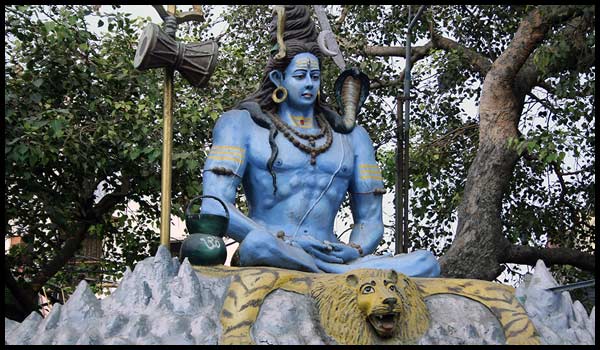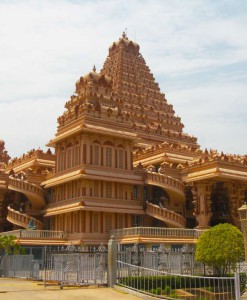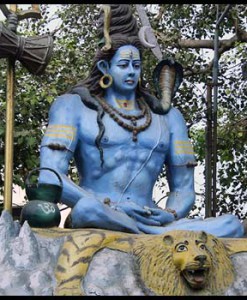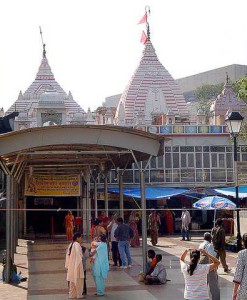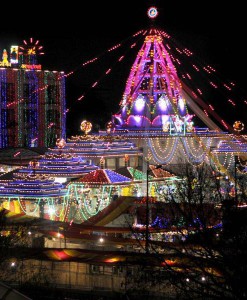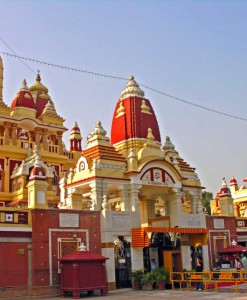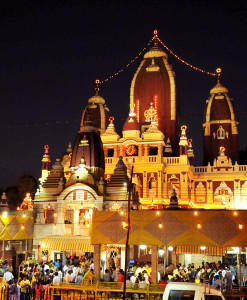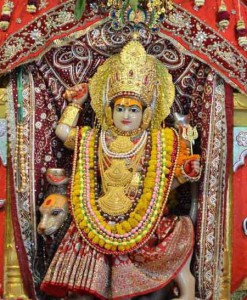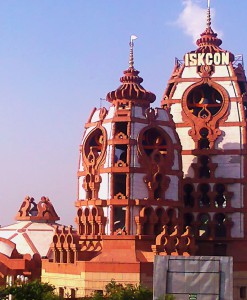No products in the cart.
This is the most beautiful Hindu temple in Delhi. Situated near Dilli Gate, at the entrance of the Walled City, Shri Shiv Mandir can truly claim, among all Hindu shrines in the capital, to best preserve the essence of this faith. The temple, like the religion, is a show of contrasts. Depending on individual sensibilities, it can be perceived as dignified or showy, soulful or superficial, familiar or exotic.
Of course, the city has grander temples: Akshardham Mandir in east Delhi and Chhatpur Mandir in south Delhi. But they are too organized and too imposing. These three temple complexes seem to miss the beauty of Hinduism, in which one could find the God in a pebble. Shri Shiv Mandir – so small that you can walk around it in two minutes – is closer to that idea without being any less substantial.
Shiv Mandir, Delhi Gate;
Tucked at one end of a three way crossing and clinging to a kachori-subzi stall, it has no stately flight of stairs, no imposing tower of stone. A statue of a blue-bodied Shiv – the god of destruction – seated in a yogic posture, watches the world from the roof. The temple’s marble floor is almost level with the road. On the right of the entrance is the statue of Kal Bhairav, a scary-looking incarnation of Shiv. Worshipped by the cannibalistic Aghora sadhus, Bhairav is sculptured in black marble. A cobra is crawling round his neck. One of the six arms is carrying a wine bottle. Another arm is holding somebody’s head. The lips are painted blood red. A black dog is sculptured standing under his legs. A garland of fresh marigolds is flung around Bhairav’s neck. Some worshipper has put a similar garland on the dog too. The wall that faces Dilli Gate has a similarly haunting statue of Goddess Kali.
The principal praying room is quiet, dark and has a cluster of gods: the black Shani Devta, the grey Shiva Lingam and a couple of deities in white marble: Ganesh, Shiv, Parvati, Radha, Krishna, the Nandi bull and the Sai Baba of Shirdi. Some statues are draped in gold-embroidered silk clothes.
The visual centerpiece of the temple, however, is not an assortment of these statues but a giant peepal tree inside it. A marble platform not more than two feet high has been built around its massive trunk. The part of the trunk that emerges out of the platform is smeared with an orange-coloured paste. This smudge is Balaji, an incarnation of Hanuman.
Earlier, the tree was in what would have been a courtyard. A few years ago, the temple was renovated and a brick roof blocked off the sky. Now the trunk goes through the roof, where it breaks into a network of slanting branches. A makeshift staircase, installed beside the Shiv lingam, takes you, through a circular opening, to the roof, perpetually covered with fallen peepal leaves. Standing behind Shiva’s statue, you look down to see gossiping men, street food hawkers, maimed beggars, smack addicts, stray dogs and occasional tourists. This noisy world vanishes when you climb down back into the temple. The daylight coming from the opening in the roof fills the dark sanctum with mystery. The marble figures look kind. The ringing of temple bells is calming.
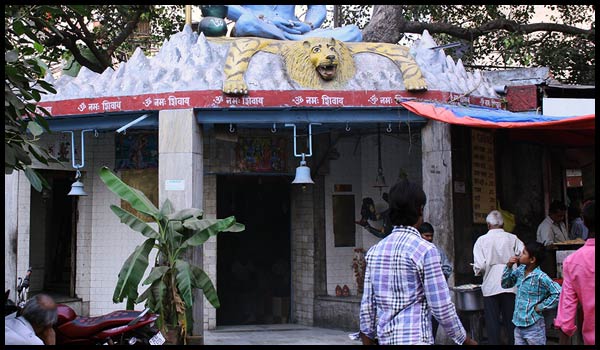
By Road: The temple present near Delhi gate. Delhi is well connected, by a network of roads and national highways, with all the major cities in India. The three major bus stands in Delhi are Inter State Bus Terminus (ISBT) at Kashmiri Gate, Sarai Kale-Khan Bus Terminus and Anand Vihar Bus Terminus. Both the government and private transport providers provide frequent bus services. One can also get government as well as private taxis here.
By Rail: The nearest Railway Station to the temple is Barakhamba Road Metro Station.
By Air: The Temple can be reached through nearest Indira Gandhi International Airport which is well connected with regular domestic flights.
This temple Opening & Closing times is 5.00 AM and 9.00 PM. During this period major part of the Lord Shiva rituals are performed. Archana, Aarti and Abhisekham are the daily pujas performed.
The various food stalls located at the entry of the temple are simply amazing. Celebrating the Indian taste buds, you get one of the most scrumptious kachori-subzis at this sacred nukkad. The current bestseller novels displayed as a carpet just in front of the temple is a treat for all book lovers with various fruit and vegetable vendors having their thelas right next to it. The tea and bread stall adjacent to the temple is a hot spot especially during the Delhi winters.

